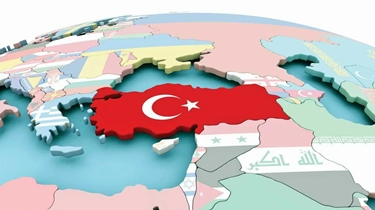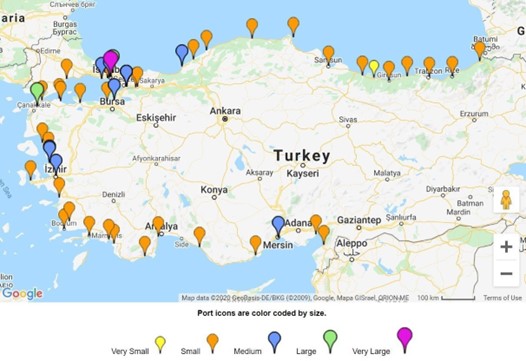nCa Report
President Erdogan has started his third term in office with his voter base intact. The coalition led by the AK Party is in comfortable majority in the parliament. There is the vast pool of goodwill for Türkiye in the greater Eurasian landmass. The geopolitical conditions are loaded with new opportunities. — The stars are aligned.
This is the right time to put the collective hopes and aspirations of the people of Türkiye into implementation. This is the time for Yeni Türkiye (New Türkiye).
The misfortune that befell on the eleven provinces of Türkiye in the shape of destructive earthquakes early this year can actually be used as the opportunity to transform the fate of the generations to come.
The loss of the more than 50000 people will always remain a wound in the soul. However, to pay due respect to their memory, there is the need to rebuilt the quake-affected provinces in a futuristic manner.
Turkish provinces hit by earthquakes and the salient features of their economy
| Province | Population | Economy |
| Gaziantep | 2,130,432 | 4% of Turkish industry located in Gaziantep
Tourism Famous for copperware and “Yemeni” sandals, other regional specialties More than 100 machined carpet factories, exports nearly USD one billion annually More than 70000 tons of pistachio production
|
| Kahramanmaraş | 1,168,163 | 1.83% of land area of Turkey
Gold Textiles Tourism
|
| Hatay | 1,670,712 | 7.6% of installed capacity of wind power of Turkey
Foreign trade about USD 6 billion About 270000 tons of cotton crop Logistics centre (about 11% of vehicles engaged in international cargo transportation in Turkey are from Hatay) Shoes industry 1500 companies producing furniture Iron and steel industry Tourism
|
| Adiyaman | 632,148 | Tourism
Mainly agriculture with some downstream value-added industries in textiles, food processing Marble
|
| Diyarbakir | 1,732,396 | Tourism
Gold and silver filigree work
|
| Şanlıurfa | 2,143,020 | Agriculture and related industries (43% of total economy of the province)
|
| Malatya | 797,036 | Agriculture and related industries mainly food and textiles
Tourism
|
| Osmaniye | 534,415 | Tourism
electricity, natural gas and oil pipelines agriculture
|
| Elazig | 587,960 | Gold
Salt Coal Tourism
|
| Kilis | 142,541 | Highest density of Syrian refugees
|
| Adana | 2,263,373 | Tourism
Agriculture, mainly grapefruit, peanut Logistics
|
As can be seen from this table, the quake-hit provinces have a diverse base of economy, covering logistics, oil and gas, textiles, carpets, metals processing, agriculture, industrial production, and tourism. Their economic rebuild is certainly among the top priorities of the Erdogan administration.
However, every plan for the revival of the economy of these provinces must be linked with the massive upgrading of transport and transit infrastructure. After all, connectivity is prerequisite for all kinds of economic activity.
The map above shows that there 18 ports of various sizes along the coastline adjoining the quake-hit areas.
One of the things to do now is to build motorway-quality roads connecting the Black Sea with the Mediterranean Sea, weaving through the earthquake-affected areas. There is also the need to build roads between Iran and the quake areas. Some roads actually exist but they need to be upgraded while more roads are required to ensure smooth connectivity without any bottlenecks.
It is noteworthy that the Port of Mersin is the largest container port in Turkey. Its production capacity amounts to 2.6 mln TEU; however, until 2018, its biggest reported size was 1.72 million TEU. It contains 26 berths and can accommodate about 30 vessels at the same time.
The Port of Izmir is one of the biggest ports on the West coast. In 2018 its reported capacity amounted to 610 908 TEU and more than 9 million tons.
There are also many piers and terminals in this coastal area, all of which can serve as reviving the economy of the eleven provinces and reduce pressure on the other major ports of Türkiye.
Assuming that connectivity infrastructure gets due attention and financing, the next step would be to make the entire area a model zone for e-commerce. If the people have something to sell, they should be able to sell it to the buyers anywhere in the world.
Two crucial elements of e-commerce are the first-mile-collection and last-mile-delivery. This entails connectivity and the enterprises that can use the connectivity efficiently.
E-commerce will get going if the postal services of Türkiye can create an integrated initiative with the road and railway services of Türkiye.
The fruit and vegetable growers in the affected areas should be supported for 100% organic farming. It can be done with the careful seed selection and crop care regimes.
It goes without saying that water saving technologies must play an important in the economic revival of these eleven provinces.
The creation of tourist villages is an idea worth considering. The coastline and the inner lands are among the most beautiful places in the world. Total immersion experience would attract large number of tourists.
The economic uplift of these provinces will strengthen the economic backbone of Türkiye.
It is totally advisable to include the quake hit areas of Syria in any plans for revival and economic rehabilitation. The development funds of the friendly countries would hopefully step forward and play their role. If the quake affected areas of Syria can benefit by such plans, it would pave way for the dignified return of the millions of Syrian refugees currently being hosted by Türkiye.
A new Türkiye is just around the corner. /// nCa, 5 June 2023
#Türkiye, #Erdogan, #New_Türkiye, #Yeni_Türkiye, #economy

